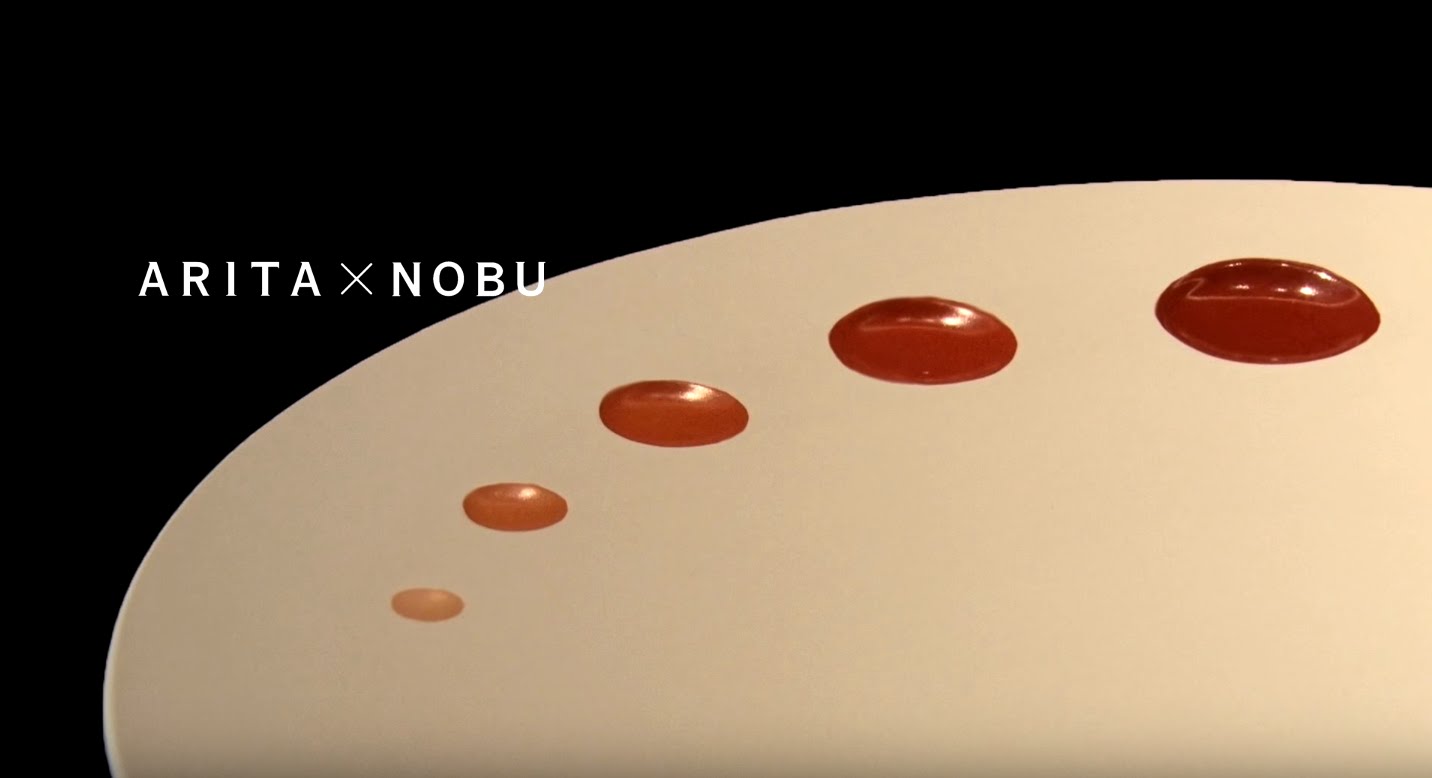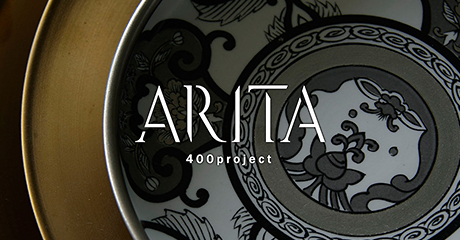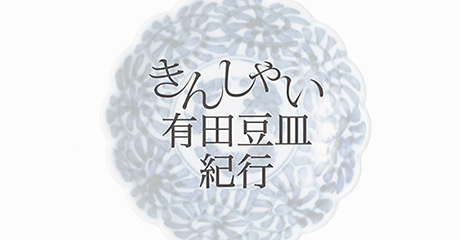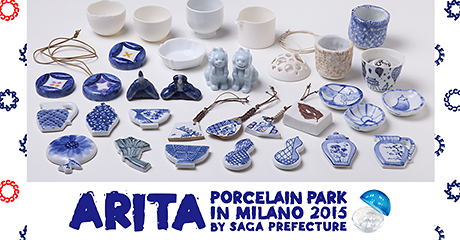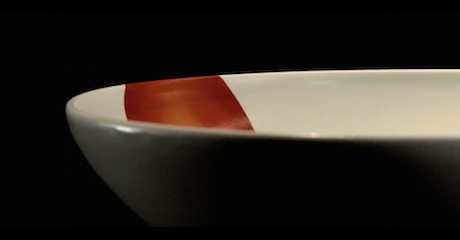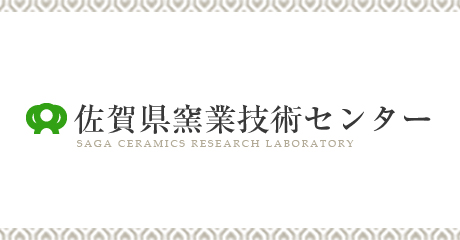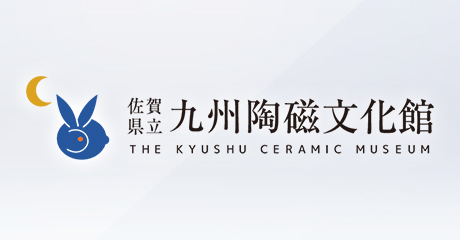006
Meetings with Other Traditional Crafts.The Production Centers Collaboration Project: New Innovation & Creation
The 31st Traditional Craft Products Month National Assembly (Saga Assembly) was held from November 21st to 24th, 2014, showcasing the first Assembly venture, Production Centers Collaboration Project between Arita porcelain and other production regions of traditional craftworks in Japan; we report on the event and its achievements.
The Traditional Craft Products Month National Assembly held mainly in Arita and Imari
Aiming to raise public awareness of traditional crafts, since 1984, every November is known as traditional crafts' month, with many promotional activities across Japan. Its core event, the Traditional Craft Products Month National Assembly was hosted by the Ministry of Economy, Trade and Industry and municipalities from November 21st to 24th, 2014 in Saga Prefecture. The prefecture considered the event as a warm up for the 400th anniversary of Arita porcelain and mainly in Arita and Imari set up several venues and events to spread ceramic culture, including exhibitions and sales of ceramic works, pottery demonstrations, hands-on workshops, and symposiums.
As the Assembly's first initiative, the Production Centers Collaboration Project, a joint effort between Arita porcelain and other production regions of traditional craftworks in Japan was showcased. Inspired by the idea of "An Encounter Leading to New Innovation & Creation," new possibilities for traditional crafts were explored through monozukuri (art of craftsmanship) and personal exchanges in the Collaboration Project.

YOUWA: A child of Arita & Wajima-nuri
Wajima-nuri is one of the representative Japanese lacquerwares, and on the smooth surface of this lacquer piece, asanoha kuzushi geometric patterns were applied using the Arita painting technique; a child born of the traditional craft artisans of Wajima-nuri and Arita in the Production Centers Collaboration Monozukuri Program. The name YOUWA takes one kanji character from Arita and Wajima. Filling a quiet supporting role to enhance the attractiveness of the food, these dishes are a superb and sophisticated demonstration of traditional crafts and skills.
Taiichi Kirimoto, a Wajima-nuri lacquerer, designed the form, which was then decorated by Hiroyuki Hashiguchi, a traditional Arita ceramic artist, who told us:
"I struggled with the design for this form made by such a top-class artisan, and suddenly this asanoha kuzushi came into my mind. Painting on lacquer is very different. Ceramics easily absorb colors such as gosu (cobalt blue), and as lacquer does not, it was extremely challenging, but I'm also excited because by sharing the skills and techniques with other production regions, a totally new monozukuri might be born."
Mr. Hashiguchi and his fellow ceramists told us their next work will incorporate Wajima-nuri designs on Arita porcelain. If the relief effect of maki-e (sprinkled picture decoration) becomes possible, a unique and dramatic style of ceramics will be born. "I would be very pleased if we could create ties between production regions and offer opportunities to meet, develop, and grow together. All traditional production areas are now confronting tough times, but stimulated by such regional exchanges and the challenges of creating something never seen before, we can produce truly innovative and contemporary works." (Mr. Hashiguchi)

撮影:中倉壮志朗

撮影:中倉壮志朗
Material to Co-star: Star double-billing of a wooden base and the potter's wheel
A collaboration between Takehito Nakajima, a lathe artisan of Yamanaka lacquerware, and Mikiko Shirasu, a thrower of Arita porcelain. Hidden beneath the shining skin of Yamanaka lacquerware lies a surprisingly simple lathe-turned wood base, and with no adornment the beauty of wood and white ceramic, free of design, are plain to see and glide to center stage, a pure child of cut wood and fired earth.
Concerning the monozukuri collaboration of turner and thrower, Mr. Nakajima said: "Producers of Kutani tea cups and lacquer saucers have long collaborated, but I was open to learning something new, so I joined the project." However, he quickly found: "There were a number of problems and only a few pieces made it through as finished works. But we did find that the variety of works increased depending on how materials were combined, and a new arrangement would show us the way to the next step." So the new monozukuri is very challenging but rewarding.
"Artisans are apt to shut themselves away in their studio with few opportunities to meet other craft workers, so collaboration with other production areas to get a different view is very healthy. Even though areas and materials are different, artisans share the same ambitions and we inspired each other." (Mr. Nakajima)

Open factory: Gallery Arita
Another pillar of the Collaboration Project was the "personal exchange program" involving next-generation artisans of Arita porcelain and artisans from other prefectures, in which young people exchange visits with their contemporaries in the production areas of other prefectures. Yusuke Fukuda of Fukuju Kiln, a program participant, felt stabbed in the heart by his exchange host's insightful comment on the present state of Arita porcelain, "It's terrible. Arita is just wasting away!"
Mr. Fukuda visited an Edo-komon (dyed textiles with small patterns prevalent in the Edo period) production area located aside the Kanda River in Shinjuku-ku, Tokyo.
"Not all production areas of traditional crafts are in good shape, but even in hard times, there are new initiatives. Futaba-en, a producer of Edo-komon, is in the vanguard; the company holds such innovative activities as dyeing workshops or an event turning the entire town into a gallery. Arita has places where you can learn its history, but sadly few hands-on fun places." (Mr. Fukuda)
Yoshiyasu Harada of Kichiemon Pottery enjoyed chatting to the members of Takaoka Traditional Industries Youth Association in Toyama Prefecture, which includes metal foundries and woodwork (lacquer) studios, and also individual artisans, making for free and open exchanges and a dynamic atmosphere. Interestingly the foundries of Takaoka City have the same local function and importance as kilns in Arita. Mr. Harada enthused: "Meeting with the same young generation who are carrying on the traditional crafts of Japan was really encouraging. I visited 12 factories in one day, learnt different approaches to monozukuri and greatly increased my awareness of every aspect of traditional production in many different fields."
Mr. Fukuda introduced his idea: "Every year crowds visit the ceramic bazaar, and I want to not only sell ceramics, but also offer a participatory menu to visitors such as visiting studios and workshops; I feel this is a good possibility." After experiencing the Craft Tourism of Takaoka by visiting factories, Mr. Harada was a convert: "It is enlightening for visitors to experience a real worksite as it really is to better understand the value of traditional crafts. We will also learn a lot from our customer comments; this can only lead to better monozukuri."


Production centers collaboration spearheads breakthrough for new traditional industry from Arita
The Collaboration Project with its two pillars, monozukuri and personal exchanges, is coordinated by Hiroshige Akase, the representative of the Made in Japan Project company engaged in marketing and production of traditional craftwork. He felt there are limits to initiatives in which external specialists come into a production center to make changes. So, to encourage exchanging ideas and learning from other production regions, he proposed to Saga Prefecture, the sponsor of the Assembly, a collaboration with traditional craftwork production centers across Japan. No one knew quite how many centers would respond, but encouragingly the feedback was enthusiastic "If Arita's in, we're in."
In the end, 11 production centers from across Japan took part with Mr. Akase rushing about ardently encouraging participants. "I believe how earnestly the artisans approach their collaboration partner determines success or failure. To motivate participants, the Arita side must show they're really serious about the project," said Mr. Akase. If anyone holds back, they will not be satisfied with the end product; it will not be authentic and quite simply they will have no confidence in selling it.

With the 2016 celebrations for the 400th anniversary of Arita porcelain fast approaching, with this Collaboration Project, Saga Prefecture aims to be the leader in the revitalization of traditional craftwork in Japan. Looking back on the first year, 2014, Mr. Akase said: "I wanted our visitors to the venues displaying the results of the monozukuri program to give us unforgiving feedback, so the artisans can really show what they can do. We must forget the past ways, and start creating something new, otherwise, we will fall behind the times. Yet, if an individual strikes out alone in their local area, they may not be taken too seriously." Therefore, Mr. Akase emphasized: "Take heart and break free by collaborating with other production centers."
In the second year it is planned to start commercial ventures in cooperation with local young designers.
"As the world of traditional crafts is one of ultimate specialization, however excellent an artisan's skill, separation from the market may occur. As for design, it cannot be created just by thinking in front of a PC; if designers don't get out and visit the actual worksite, it won't happen. With firm tie-ups on both sides, I want to create commercially strong articles much appreciated by users, and spread them from Arita across all of Japan." (Mr. Akase)
Moreover, Mr. Akase looked hard at "community development focusing on traditional crafts." He appealed in the personal exchange program to develop a feel for designing the entire ceramics business. He points out at present local awareness of the Arita area is still low. When we look at each pottery, they are filled with a can-do spirit, but since the town has no shared vision of itself as an important center of traditional crafts, their spirit is not focused enough to project an attractive image of the whole package.
After meeting with other production regions, local people are once again aware of Japanese representative production centers of traditional crafts, and among young artisans, a passionate feeling is growing for being born in Arita. From this spirit, the monozukuri of the next era will be born. We look forward to the expansion of the Production Centers Collaboration Project.



